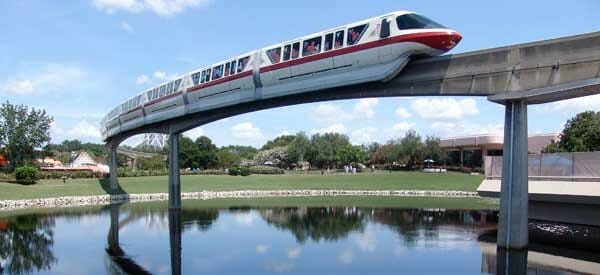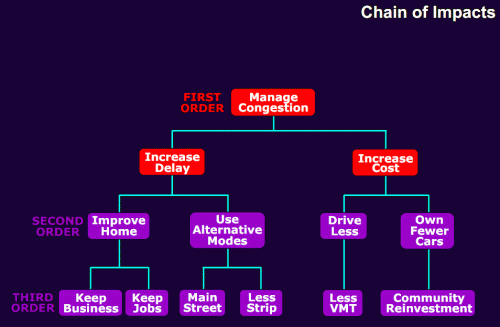I Love the DisneyWorld Monorail. Here is Why It is A Terrible Public Transit Technology
The other day I got stuck in Orlando for a day and took the opportunity to sit it out at DisneyWorld. Despite being essentially a walk-up guest, the hotel upgraded me to a beautiful room looking out at the Magic Kingdom and the lake in front of it.
The Magic Kingdom is an interesting public transit case. It is located miles away, across a lake, from its parking lot and can be quite a distance from many of the Disney hotels. So most everyone comes to the Magic Kingdom in some sort of mass transit.
The most eye catching is the DisneyWorld monorail. This version, designed in the late 1980's but fairly similar in outline to the original early-70's version, is clearly beautiful. When I talk about industrial design, I often use a scale where 1 is the Boston City Hall and 10 is the Disneyworld monorail. Not only are the trains themselves beautiful, but the spindly monorail beams are clearly better looking than most any other overhead rail arrangement.
But what makes for a good theme park ride does not necessarily make for good public transportation. Here is why:
- Monorails like this give up all the efficiency of trains. Rail is efficient because the rolling friction of a flanged metal wheel on a metal rail is so much lower than, say, a tire on concrete. But these monorails and most others ride on tires -- there is rolling friction of the tires on the top of the concrete beam as well as with the tires that stabilize the train on the sides of the beam. These monorails are basically long busses up on a rail.
- Monorails have lower capacity per car than trains. For stability reasons on the narrow beam, monorails must be shorter and narrower than most rail trains (even given the world's too-narrow rail gauge standard). This means for roughly the same car length and weight, they carry fewer passengers.
- Monorails have the same downsides of trains. They have capacity restrictions -- specifically they need much longer headways between trains for safety than busses do on the road. And they are inflexible -- once you spend billions of dollars to put them on one route they are going to stay on that route.
As I sat on the lake, I could see all three modes of transit that Disney uses at the Magic Kingdom. Both monorails and high capacity double-deck ferries run from the parking lot to the park, and busses run from most of the hotels to a bus depot at the park. I could be wrong because it was not scientific, but I believe that the ferry boats had a lot more capacity per hour than the monorails -- particularly since Disney had to lengthen the distance between trains several years ago after an accident (yes, they actually have a single loop of track with no switching a couple of miles long and with perfect visibility ahead and they actually had a collision).
More telling is the fact that Disney has essentially abandoned the monorail for all its future expansions. Yes, they built one to Epcot, but they have reduced service to one every 15 minutes or so and it brings in an absolutely trivial portion of the guests. With its growing network of parks and hotels and all the possible point to point destination pairs, it relies on busses now almost exclusively for internal transport.

